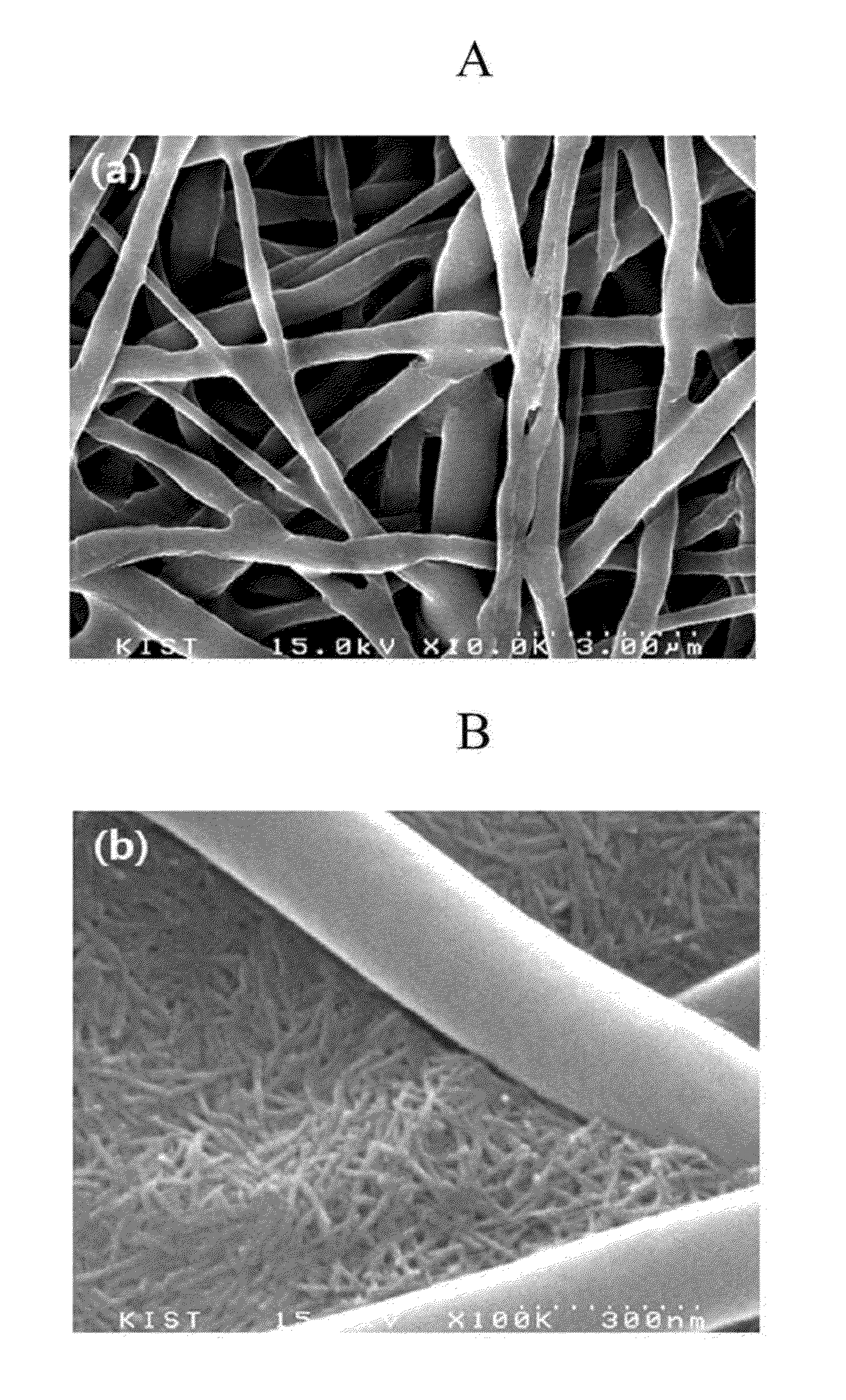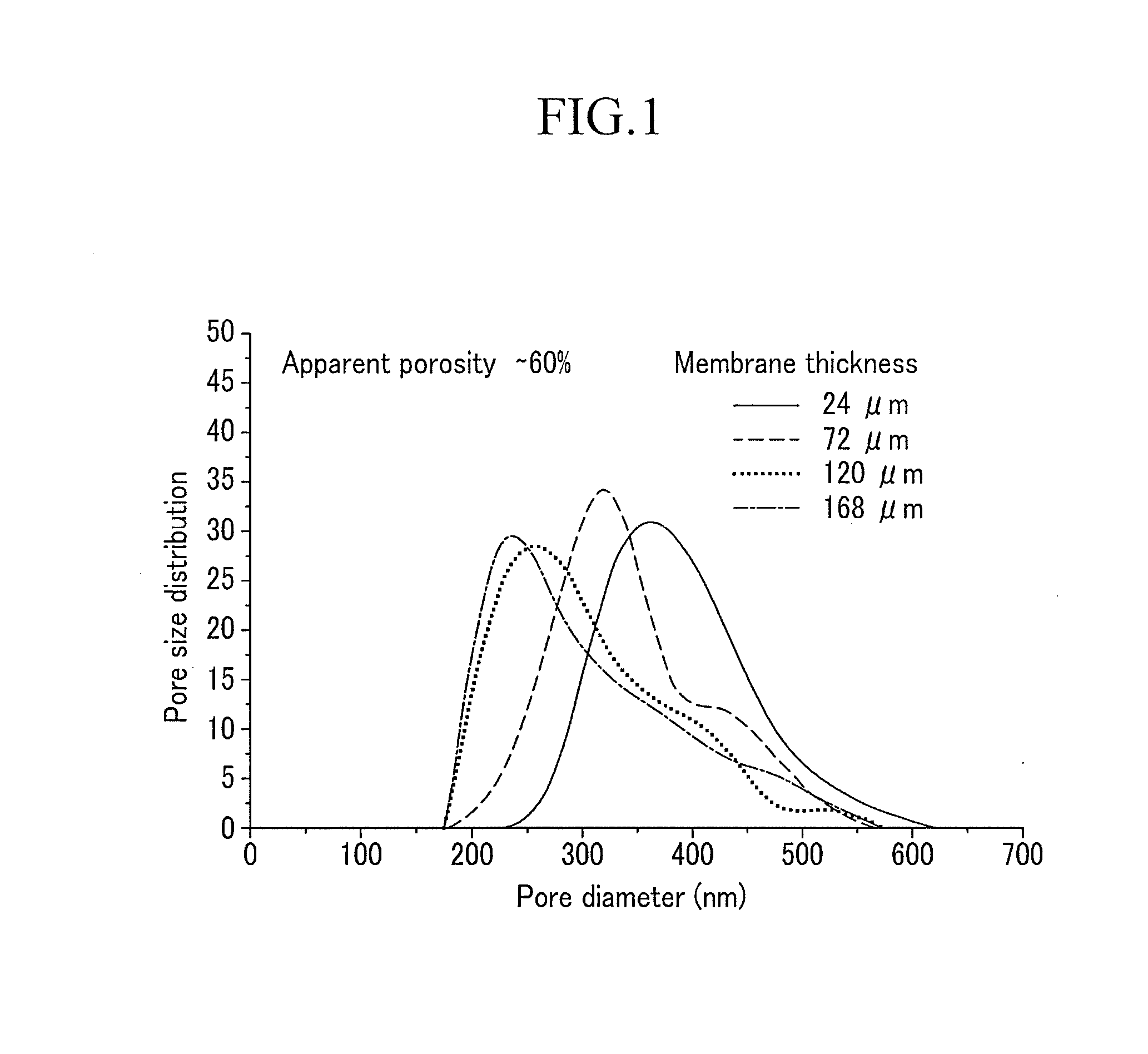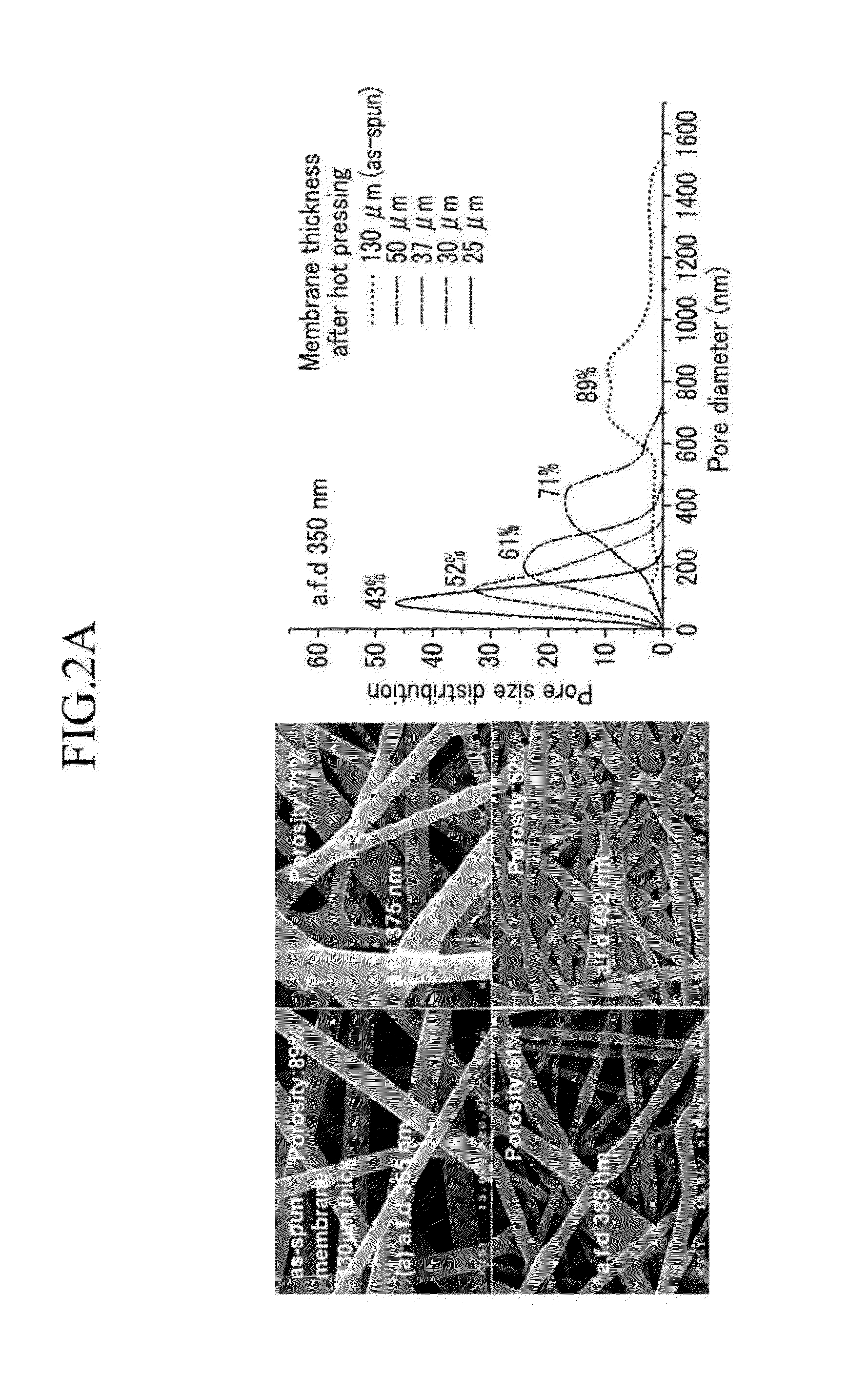Fiber-based filter with nanonet layer and preparation method thereof
a fiber-based filter and nano-net technology, applied in gravity filters, separation processes, filtration separation, etc., can solve the problems of reducing flux, reducing permeation rate, and increasing the loss of pressure caused by small pores, and achieve excellent heat resistance and mechanical properties, excellent filtration efficiency, and high flux
- Summary
- Abstract
- Description
- Claims
- Application Information
AI Technical Summary
Benefits of technology
Problems solved by technology
Method used
Image
Examples
example 1-1
Preparation of Bohemite Nanofiber
[0085]About 15 mL of aluminum butoxide [Al(O-secButyl)3] was put into about 1,450 mL of distilled water, and about 10.9 mL of hydrochloric acid was added thereto to prepare a white dispersion liquid. About 38 g of aluminum isopropoxide [Al(O-isoPropyl)3] was added to the white dispersion liquid, and then the mixture was ultrasonically stirred in an ice bath for about 1 hour. FIG. 3 is a scanning electron microscope (SEM) photo illustrating the surface of a bohemite nanofiber porous layer composed of a nanonet structure obtained by filtering the dispersion liquid.
[0086]FIG. 3 is a scanning electron microscope (SEM) photo illustrating the surface of a bohemite nanofiber porous layer composed of a nanonet structure obtained by filtering the dispersion liquid. Referring to FIG. 3, a bohemite nanonet layer may be introduced into the filter when dispersion liquid is used.
example 1-2
Preparation of Bohemite / Carbon Nanotube Complex
[0087]About 15 mL of aluminum butoxide [Al(O-secButyl)3] was put into about 1,450 mL of distilled water, and about 10.9 mL of hydrochloric acid was added thereto to prepare a white dispersion liquid. About 38 g of aluminum isopropoxide [Al(O-isoPropyl)3] and multi-wall carbon nanotube (MWCNT, supplied by Nanocyl Inc.) were added to the white dispersion liquid, and then the mixture was ultrasonically stirred in an ice bath for about 1 hour. The stirred solution was reacted at about 150° C. in a high pressure reactor connected with a Teflon tube for about 22 hours and 22 hours, and then white dispersion liquids as shown in FIG. 4 were prepared.
[0088]FIG. 4a illustrates a dispersion liquid of a bohemite / carbon nanotube complex obtained after reaction for about 12 hours and a transmission electron microscope (TEM) photo thereof. Referring to FIG. 4a, an aspect that bohemite is adsorbed on the surface of carbon nanotube is shown. FIG. 4b is ...
example 2-1
Electrospray of Dispersion Liquid of Bohemite Nanofiber to SiO2 / PVdF Complex Ultra-Fine Fiber-Based Porous Body
[0089]The dispersion liquid of bohemite nanofiber prepared in Example 1-1 was sprayed on the SiO2 / PVdF ultra-fine composite fiber-based porous body prepared in Comparative Example 2 [FIG. 5a] through a spinning nozzle of about 27 G under a high-voltage electric field of 12 kV at a discharge rate of about 30 μl / min.
[0090]FIG. 5b illustrates a nanonet structure composed of a bohemite nanofiber formed on the surface of a fiber-based porous body.
PUM
| Property | Measurement | Unit |
|---|---|---|
| pore size distribution | aaaaa | aaaaa |
| pore size distribution | aaaaa | aaaaa |
| length | aaaaa | aaaaa |
Abstract
Description
Claims
Application Information
 Login to View More
Login to View More - R&D
- Intellectual Property
- Life Sciences
- Materials
- Tech Scout
- Unparalleled Data Quality
- Higher Quality Content
- 60% Fewer Hallucinations
Browse by: Latest US Patents, China's latest patents, Technical Efficacy Thesaurus, Application Domain, Technology Topic, Popular Technical Reports.
© 2025 PatSnap. All rights reserved.Legal|Privacy policy|Modern Slavery Act Transparency Statement|Sitemap|About US| Contact US: help@patsnap.com



